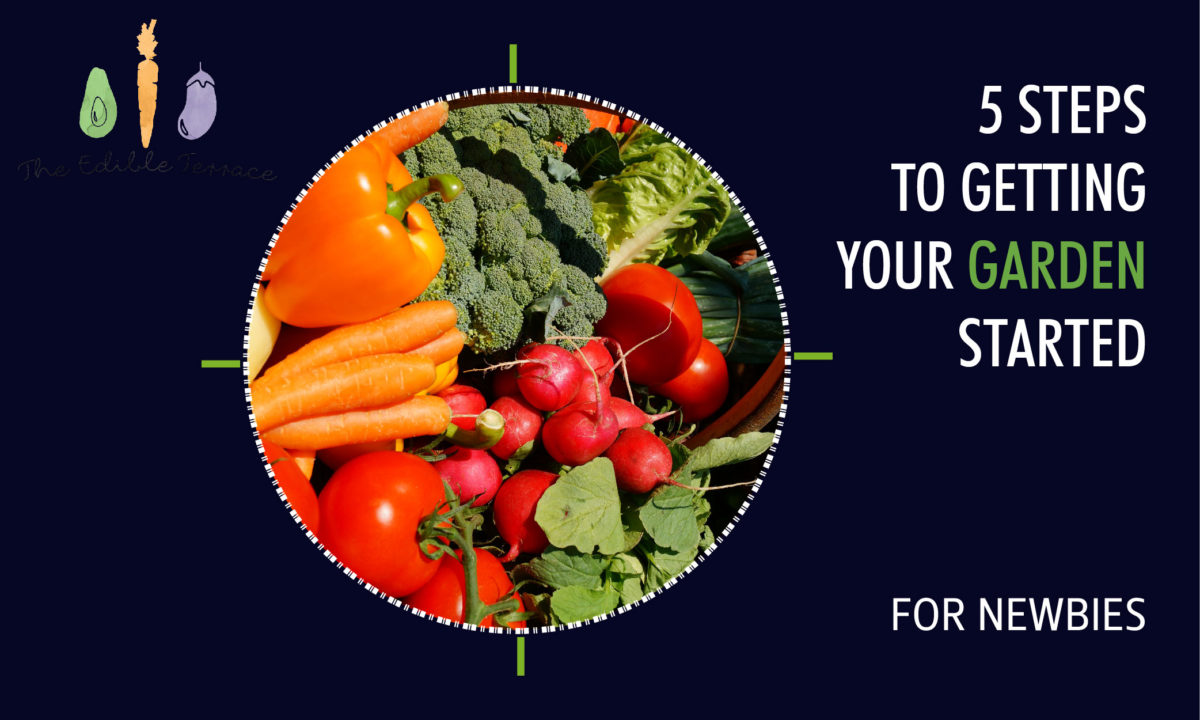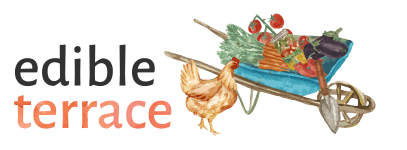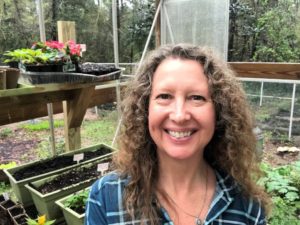Hey! By the way… TheEdibleTerrace is reader-supported. When you buy through links on our site, we may earn an affiliate commission and as an Amazon affiliate, we earn from qualifying purchases. Thanks in advance for your support!

The idea of starting your own vegetable garden can be very tempting. After all, there are few things more satisfying than growing your own delicious food! You might be hesitant to get started, though, not really knowing how to start a vegetable garden.
Don’t worry, we have you covered! Starting a vegetable garden is not as difficult as you might think, but there are a few things you’ll need to know so that you’re prepared when you finally jump in. Below we’ll cover some of the most important tips for starting a vegetable garden.
[easyazon_infoblock align=”right” identifier=”B07FNCCB3P” locale=”US” tag=”edibleterrace-20″]
Pick An Area That Gets Plenty of Sunlight
As they say in the world of real estate, “location, location, location,” and gardening is no different. You’ll need to pick an area that gets plenty of sunlight. Many vegetables need at least 6 hours of direct sunlight each day to prosper, so keep that in mind.
You do need to think this through a bit: it’s a good idea to take a few days to check up on the sunlight in the area you’re considering every hour or two, to see how it moves throughout the day. Also consider how the trees produce shade, and how they might in the spring or summer when replete with leaves.
Pick An Area That Has Good Soil
Most vegetables require “loamy” soil. This type of soil, referred to as loam, has a precise definition: it’s 40 % silt, 40 % sand, and 20 percent clay. Finding this naturally can be tough, though. Therefore, you should help loosen up the soil yourself by digging 8 to 12 inches using a garden fork.
You’ll also want to amend the soil by adding organic compost, which you can mix into the soil using a spade or garden fork.
[easyazon_link identifier=”B00AB2XO9Q” locale=”US” tag=”edibleterrace-20″]Mushroom compost[/easyazon_link] (called Black Gold where I live!) provides nutrients to the plants and helps improve water drainage so that the plants don’t drown.
Start Out With “Easier” Vegetables
Starting out with vegetables that are less difficult is a good idea as not only will it give you the needed experience to make your garden a bit more complex, it will also ensure you run into as few difficulties as possible and are less likely to give up when first learning how to grow a small garden.
Some recommended vegetables to start out with are tomatoes, cabbages, lettuce, squash, zucchini, or radishes. You can also buy young plants and transplant them into your garden, which is definitely a good idea when starting out – plants like tomatoes, cucumbers or lettuce can be tough to grow from seed.
[easyazon_infoblock align=”none” identifier=”B07SSFGC5S” locale=”US” tag=”edibleterrace-20″]
Start With a Smaller Plot
It can be tempting to go all out and create a huge, diversified garden from the get-go, but starting with a small plot will make it so you can pay full attention to the vegetables that you’re planting. It also makes it easier to reverse any mistakes you might make.
8′ by 2′ is a good plot size to start out with. As you become more experienced year by year, you can gradually increase the size. However, only grow what you know you’re going to eat!
[easyazon_infoblock align=”right” identifier=”B01CTKJUNG” locale=”US” tag=”edibleterrace-20″]
Keep Spacing Needs in Mind
It’s important to think about spacing, and not just because your garden has finite room. If you want to plant corn, for example, keep in mind that these grow tall, potentially blocking out needed sunlight for adjacent plants. Carrots and peas, on the other hand, are both small and so can be planted tightly next to each other. In contrast, [easyazon_link identifier=”B07Y8VW6DL” locale=”US” tag=”edibleterrace-20″]pumpkins[/easyazon_link] like to dominate a space and need a lot of room.
Conclusion
Running a vegetable garden is a great hobby. There’s not much more satisfying than eating food that you grew yourself – you’ll understand firsthand all the effort that went into putting those veggies on your table, and many people report that they also taste much better than store-bought vegetables.
We hope we’ve helped you learn a bit about how to grow a vegetable garden. Overall, use common sense, be patient, and learn as you go and you’ll soon have a green thumb!

